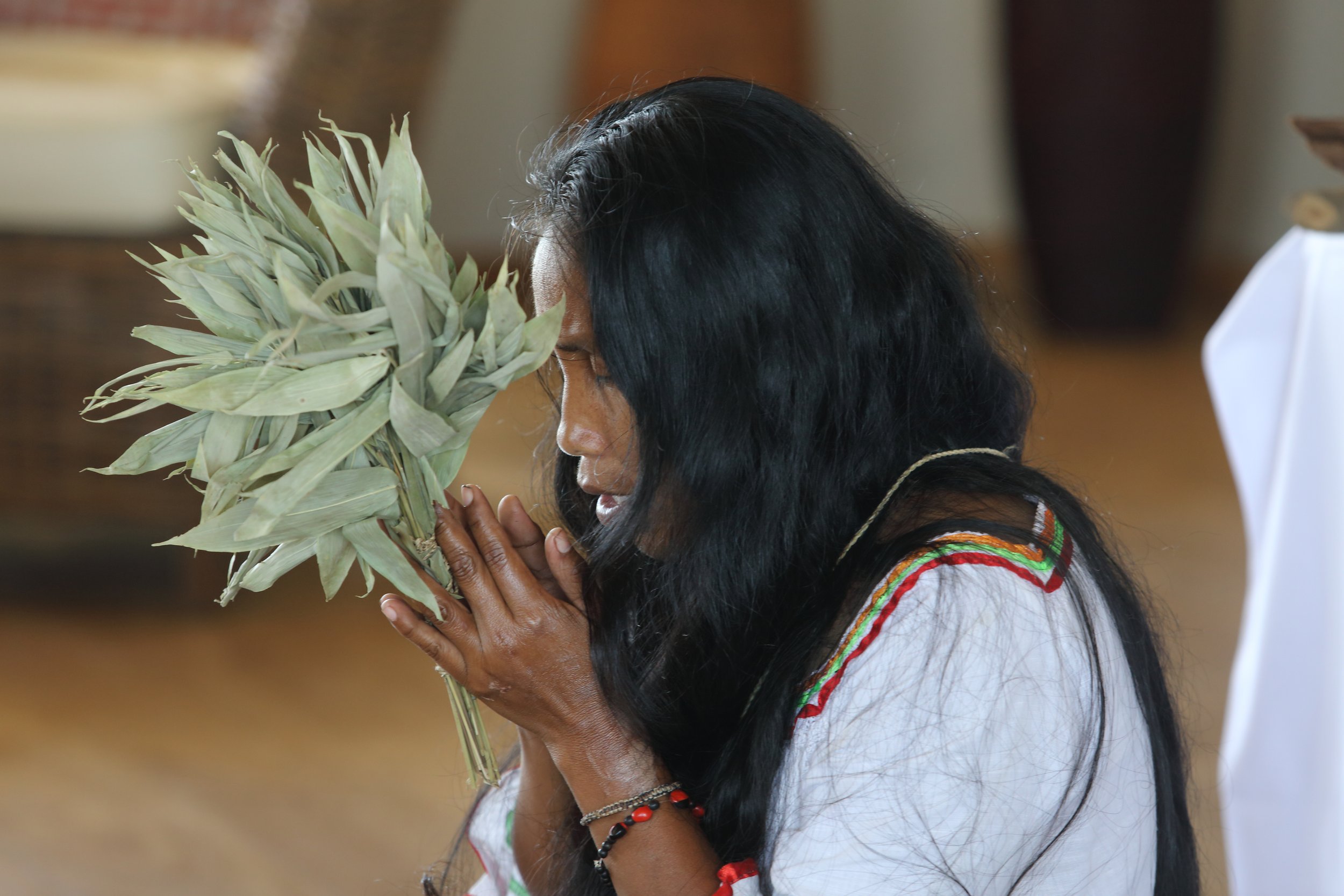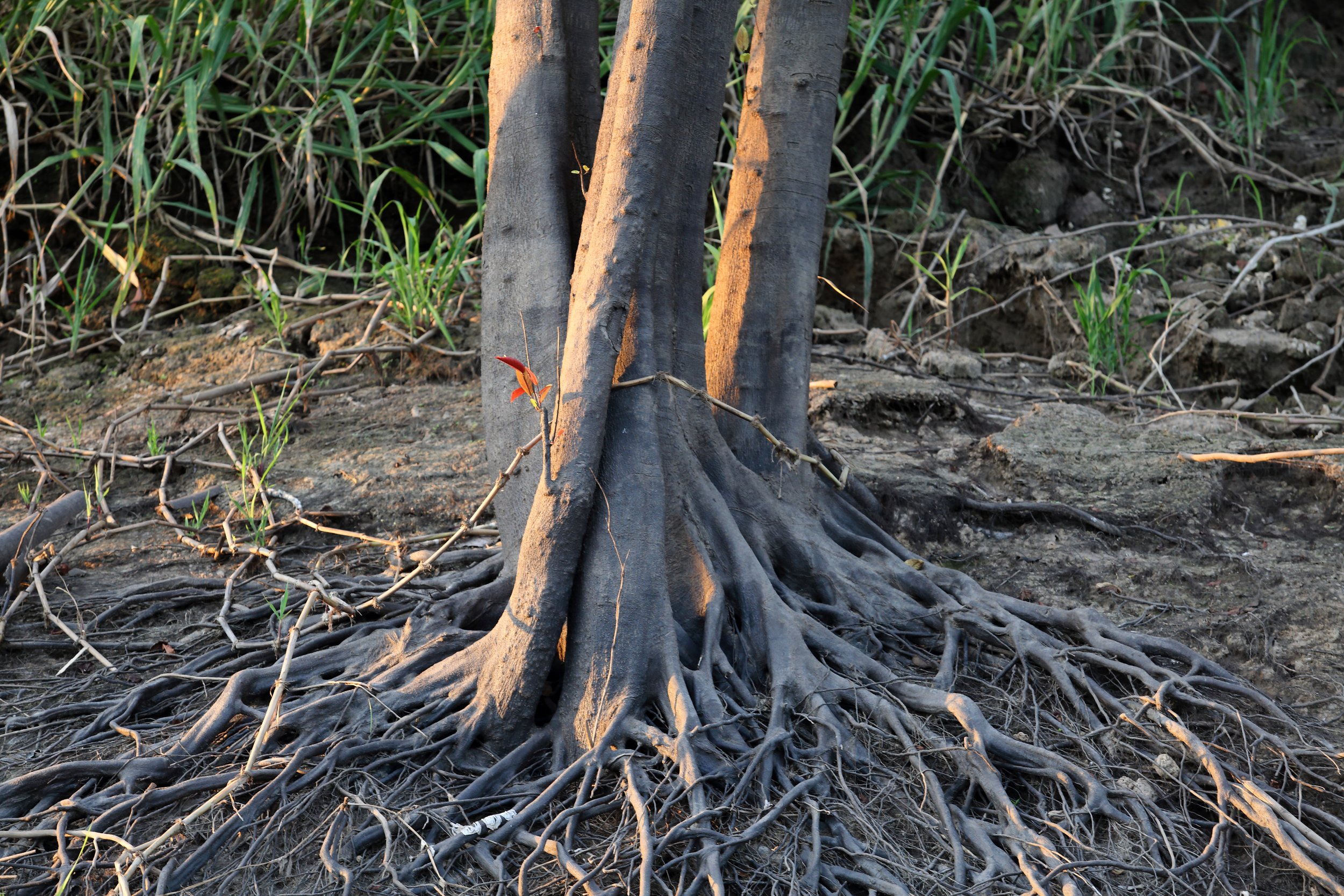A Sip of the Forbidden Plant: Ayahuasca
Found deep in the Amazonian jungle, Ayahuasca is a traditional plant brew made from the Banisteriopsis caapi vine and the leaves of Psychotria viridis Ruiz and Pav or Diplopterys cabrerana (Cuatrec.) B. Gates. It contains DMT (N, N-Dimethyltryptamine) along with harmala alkaloids (harmine, harmaline, and tetrahydroharmine) and has the capacity to produce powerful changes in awareness and consciousness, according to the National Center for Biotechnology Information.
Traditionally, this holy concoction of plants was used in religious ceremonies in tribes that lived within the regions of Peru, Ecuador, Brazil, and Colombia, all countries gifted with a rich tropical jungle home to many magical living species. Amongst them is the grandmother of them all, Aya meaning “spirit,” “ancestor” or “dead person,” and huasca meaning vine. Together, these two parts of a word spell out Ayahuasca, which is “the vine of the soul,” or “the vine of the dead,” details Krim Kristensen for the Multidisciplinary Association for Psychedelics Studies.
Now that word has spread, and because it is only legal where the vine grows naturally (Brazil, Ecuador, Peru, Bolivia, and Colombia), "the Ayahuasca trail in Peru and Colombia is well-traveled, with tens of thousands of foreigners taking ayahuasca there every year," says Joshua Wickerham, chief adviser to the Ethnobotanical Stewardship Council, to Emma Thelwell for BBC News. Almost everyone visits in quest of healing and spiritually enlightening experiences distinct to this natural creation. Ayahuasca continues to gain popularity as an effective treatment for depression, post-traumatic stress disorder, and substance abuse, despite the lack of scientific research.
In my case, I was neither an addict nor a permanently traumatized or depressed person unable to function in a bustling society, but I did suffer from persistent anxiety that denied me even a single day of peace. My inability to distinguish between intrusive and healthy thoughts became a difficult task. My relationship with my parents, my father in particular, was marred by miscommunications and misunderstandings, which led to escalating conflicts that weakened us both. My therapist, Ursula, suggested Ayahuasca as a prospective alternative healing method that could help me overcome my inner demons. However, it was necessary to participate in a tobacco ceremony the day before.
*****
I have never seen the second floor of the psychology institute so crowded. We are all patients attending sessions with either Ursula or Fernando, her partner, and fellow psychiatrist. As this is my first time, I am slightly nervous. A few moments pass before a burly, middle-aged white male introduces himself to the group. Behind him is a much younger, scrawnier individual with bird-like features. Their presence dominates the room's energy, and we all become silent and attentive.
"Welcome, welcome, welcome everyone." His voice is powerful yet soothing. "I'm Shacha Domenech, and this is Martin. We shall serve as your shamans during the ceremony." He gestures to a thin, bird-like man who is busy fixing the strap of his drum to his torso. "We'll start by separating you all into three different rooms." He pauses for a while and raises his fingers to his mouth, as if contemplating how to carry out this divide, then walks slowly and quietly around each of us, sensing and feeling our energy, or so I imagine. "All right," he says finally. And we scurry to his instruction.
I eventually end up in a room with two other people. We can sit on mats on the floor, and there are two quarts of a murky brown liquid in clear containers next to them. I notice a bucket on the other side of each mat. We all try to make ourselves as comfortable as possible. "Okay, now that everyone is settled in. I'll start with an explanation." Martin begins to mark a beat on the drum. Boom, boom, boom. "You must drink the entire jug of tobacco water until you begin to throw up.”
Boom, boom, boom. "Once you throw up, you don't stop drinking tobacco." It makes no difference if you've already vomited once or twice; just keep drinking until everything is gone." Boom, boom, boom. "It is essential that we get all of the tobacco out of your system before sending you home." We don't want you to be on your knees all night, do we?" He laughs heartily and cheerfully. Boom, boom, boom. Martin begins to gently blow on the Qena, an Andean wind instrument, this time. As he keeps playing the beat, the rich sounds of nature come out of the small wooden tubes. The entire office is filled with a sense of peace and belonging. Shacha instructs us to start drinking. The brownness of the water now looks black and deadly as I bring it up to my face to commence the digestion of hell. My nostrils are overwhelmed by the strong odor, so I cease breathing and guzzle.
As I raise the water up to my face to begin the digestion of hell, the brownness has turned black and lethal. My nostrils are overwhelmed by the strong odor, so I cease breathing and guzzle. The music appears to trigger nausea, and eventually, I gag from an endless stream of my own inner toxins. My vomit pals are also filling up their buckets. We're all trying to keep drinking the tobacco, but our own moans of sickness and defeat drive us to keep going until there's nothing left. Drink. Vomit. Repeat. Vomit, vomiting, vomiting. Drink and vomit.
The masculine and rigorous spirit of the tobacco plant provides the ideal balance to the feminine Ayahuasca counterpart. According to Ghislaine Bourgogne, a healer at the Center for the Rehabilitation of Drug Addicts and for Research on Traditional Medicines, Takiwasi in Tarapoto, Peru, "tobacco cleanses and clears emotional fields, strengthens the spirit of decision, revitalizes the patient, and encourages bravery and integrity. Along with providing warmth, it restructures and protects the energetic body. It is a plant associated with action. It is used through three methods: aerial when it is smoked, liquid (as a decoction for ceremonies and purges), and solid form.”
The first time I interacted with tobacco as a medicinal plant was through its liquid form, which was used as a cleanser before my ceremonial journey the following day. For the Ayahuasca ceremony, we would all travel to Chincha, a city three hours south of Lima, Peru. Because it includes dimethyltryptamine (DMT), ayahuasca is illegal in the United States and is prosecuted as a Schedule I controlled substance. However, some religious organizations can "use psychedelic sacraments as part of their free right to exercise religion under the First Amendment of the United States Constitution and the Religion Freedom Restoration Act," writes J. Hamilton Hudson for Chacruna.net.
Currently, only one organization is legally permitted to use Ayahuasca in the United States, and that is the Brazilian religion, Uiao do Vegetal (UDV). Another Brazilian religion, Santo Daime, has a legal license to perform Ayahuasca ceremonies, but only particular branch churches in specific sections of the country. They do not have the same level of protection as UDV. Other, more obscure groups that seek protection to use Ayahuasca in spiritual rituals (such as Soul Quest, Ayahuasca Healings, and so on) exist alongside these. The DEA has not provided any official protection or recognition. As a result, any activity involving Ayahuasca from these organizations is illegal and potentially dangerous.
This plant medicine is sacred and should be handled with respect and knowledge. Only Shamans who have dedicated their lives to the study and usage of Ayahuasca are able to properly use this magical herb to heal patients efficiently and securely. In the United States, "weekend ayahuasca ceremonies can be found in large and medium-sized cities. Underground ceremonial circles are typically small, led by itinerant indigenous shamans, non-indigenous practitioners trained (to varying degrees) in Amazonian shamanism, or former Santo Daime and UDV members, with various amounts of followers and a fee for participation," J. Hamilton Hudson writes. “Still, if you ask me, the legal status of Ayahuasca is shady enough in the US for me to want to seek it elsewhere. In my case, I went to Peru, a country where Ayahuasca grows freely and is not regulated nor prosecuted by the local government.”
We arrive at the ranch in Chincha at dusk, and we have just enough light to set up the living room in line with our distribution needs. The house appeared to have been abandoned for years. Every surface is covered in dust, and cobwebs grow in every corner. Almost everywhere, the face of Jesus is hung as adornment. I shudder at the creepy elements present, which intensify my dread of the unknown.
It takes some time to prepare everything, but after what seems like an eternity, we are all arranged in the shape of a crescent moon, with Shacha, Martin, Ursula, and Fernando facing us. The house is wrapped in silence and darkness. We are called forward one by one to take the Ayahuasca shot. Martin has begun to perform Icaros, a local name for magic melodies. It's now my turn to make my way to the front. Ursula gazes at me through the eyes. I look at the brown and bubbling fluid and tilt my head back, soaking in the mystical liquid while she smiles at me. It's not as bad as tobacco since it has a sweetness to it that balances out the pungent flavor of the smashed-up plants. I take a seat on my mat and wait.
Forever seems to have passed and I feel nothing. I begin to suspect that I am immune to the plant's effects. Shacha never misses a beat. He says that if any of us require another shot of Ayahuasca, we are welcome to do it right now. So, I do. I do not recall when a one-man band changed into an orchestra and I shrank to the size of a pollen particle and entered the cavities of a kaleidoscope. But I did it. I am a corpuscle drifting in the universe of time and space right now, yearning to be whole again.
The Ayahuasca experience is unique to every person. When a soul comes into contact with the mother plant, it must go through its own journey. The takeaways and lessons learned are unique and deeply personal. Mike Pond, a psychotherapist in Vancouver, shares his experience with the American Addiction Centers online platform: “My ayahuasca journey fundamentally altered me. It tossed all my certainties into the cosmos, releasing me from the stories I’ve told myself for decades. It allowed me to see within myself another reality, one that’s more forgiving, more accepting, and lighter. It even challenged my growing belief in atheism.”
Thousands of people throughout the world have experienced the wonderful healing effects of Ayahuasca, similar to Mike Pond's testimonial. If used correctly and in a safe atmosphere with experienced handlers, the individual experiencing the plant's psychedelic effects is more likely than not to experience a life-altering miracle.
My father and I now enjoy a wonderful relationship based on open and honest communication. I've regained control of my emotions and thinking processes, and I'm no longer bothered by unwanted introspection and spirals. It is not an exaggeration to say that I owe the majority of this to the spiritual journey I underwent while taking Ayahuasca. So now, if I come across someone who feels curious about the plant, I don't hesitate to share my own experience with them. Because I will be forever thankful to the mother plant and because everyone deserves peace.




